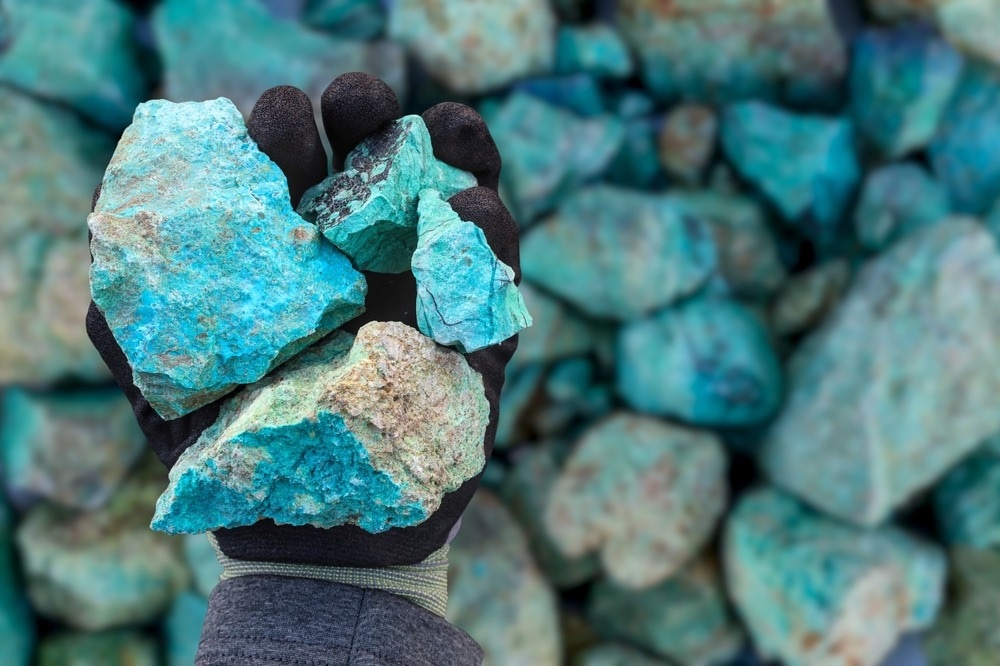Oxidation (and reduction) reactions occur when electrons are transferred from one molecular species to another, with the species donating electrons being oxidized. This reaction is commonly associated with mining operations and is a major concern for mine operators.

Image Credit: BJP7images/Shutterstock.com
Oxidation in Minerals and Mining
When it comes to mineral and mining oxidation, a primary driver is naturally acidic rainwater and groundwater that oxidizes pyrite and other sulfides. This produces sulfuric acid that drains into soils, the water table, and mineral-containing ore bodies.
Minerals react with the sulfuric acid, causing them to oxidize and become less valuable. Furthermore, many of the byproducts of oxidation in mining are toxic, deteriorating the surrounding environment.
Oxidation in Mining
Mining operations increase the exposure of pyrite and other sulfides to naturally acidic waters. Operations also expose these materials to air, which oxidizes them.
When pyrite is exposed to air by mining operations, it can fully oxidize within a few years. Exposing pyrite also makes it more available to microorganisms to accelerate its oxidation. The result is a hastening of sulfuric acid production that typically takes tens of thousands of years.
In one recent study, researchers from Pennsylvania State University found that increased surface fracturing and erosion will accelerate pyrite oxidation deep underground. The researchers noted that this type of surface degradation is a part of any mining operation and can lead to highly problematic acid mine drainage. This discharge typically contains toxic metals, rare-earth elements, and radionuclides.
Challenges Related to Oxidation in Mining
The acidic discharge produced by oxidation in mining significantly damages the surrounding environment, mostly by changing the surrounding pH and the distribution of potentially damaging materials.
Minerals swept up by acidic discharge can enter the water table and precipitate in bodies of water. Bottom-dwelling organisms living in surrounding lakes, streams, and rivers can then take up arsenic, chromium, iron, lead, and other elements. In addition to negatively impacting these ecosystems, contaminants from acidic mine discharge can infiltrate water used for crop irrigation or human consumption.
Click here to download this article
Methods to address acidic mine discharge have been in use for decades. Unfortunately, practical and cost-effective methods to prevent acid-producing oxidation have yet to mature fully. Current prevention techniques are hampered by their process complexity, high cost, and high energy consumption.
One way to address the oxidation challenges in mining is to reclaim affected soils, vegetation, and water. A simple and effective approach involves adding lime and other basic materials that neutralize acidic drainage. After neutralization, the affected area can be covered with soil or other growth media capable of sustaining vegetation.
Another simple yet effective reclamation approach is to plant vegetation as part of the mining operation. This helps to stabilize soil material, prevent erosion, and prevent water infiltration. Minimizing oxidation in mining can also be done at the initial planning stage. Properly designed mines can reduce or prevent acid drainage.
Recent Oxidation Developments in Mining Applications
Some of the most prominent recent developments related to oxidation in mining involve the circular economy concept and hybridizing existing approaches. Because aesthetic mine discharge contains high levels of dissolved metals, it can and should be seen as a resource, not waste. Researchers are currently focused on developing cost-effective ways to recover dissolved metals from acid discharge and reclaim usable water.
The latest research indicates that valuable minerals can be recovered and synthesized from acidic mine discharge, along with the reclamation of clean water. In addition to solving an environmental challenge, this approach also opens up a potential new stream of revenue for mining operators, potentially making reclamation operations financially self-sufficient.
As for current approaches that can be hybridized for a more effective overall approach, precipitating dissolved metals appears particularly promising when combined with various filtration methods, such as reverse osmosis. The latest research suggests that combining these approaches could yield excellent results.
The Future of Dealing with Oxidation in Mining
Researchers recommend focusing on several key areas in the circular economy approach and hybridization to address mining oxidation. These areas of focus should include:
- Refining the latest technologies
- Finding ways to upscale emerging technologies
- Developing fit-for-purpose designs
- Refining the purity of recovery materials
- Conducting economic feasibility studies on current technologies
- Determining environmental sustainability
- Exploring the market demand for a circular economy approach
- Testing hybrid approaches that combine precipitation and filtration methods
The future of oxidation in mining could also depend on the emergence of an unknown or underappreciated approach.
References and Further Reading
Hudson, T. et al. (1999) Can we mitigate environmental impacts from mining? Metal Mining and the Environment. https://profession.americangeosciences.org/society/intersections/faq/can-we-mitigate-environmental-impacts-mining/
Leotaud, V. (2020 November 1). The causes behind pyrite oxidation – and acid mine drainage. Mining.com. https://www.mining.com/the-causes-behind-pyrite-oxidation-and-acid-mine-drainage/
Masidi, V. et al. (2022 October). Challenges and avenues for acid mine drainage treatment, beneficiation, and valorisation in circular economy: A review. Ecological Engineering. https://www.sciencedirect.com/science/article/pii/S0925857422002014
Disclaimer: The views expressed here are those of the author expressed in their private capacity and do not necessarily represent the views of AZoM.com Limited T/A AZoNetwork the owner and operator of this website. This disclaimer forms part of the Terms and conditions of use of this website.